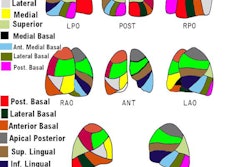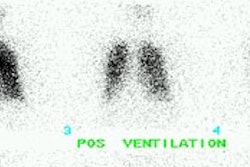Original PIOPED Criteria
High Probability:
> 2 large segmental perfusion defects without corresponding ventilation or roentgenographic abnormalities or substantially larger than either matching ventilation or chest roentgenogram abnormality.
> 2 moderate segmental perfusion defects without corresponding ventilation or roentgenographic abnormalities and 1 large mismatched segmental defect.
> 4 moderate segmental perfusion defects without ventilation or chest roentgenogram abnormalities.
Intermediate probability (indeterminate):
Not falling into normal, very-low-, low-, or high-probability categories.
Borderline high or borderline low.
Difficult to categorize as low or high.
Low probability:
Nonsegmental perfusion defects (e.g., very small effusion causing blunting of the costophrenic angle, cardiomegaly, enlarged aorta, hila, and mediastinum, and elevated diaphragm)
Single moderate mismatched segmental perfusion defect with normal chest roentgenogram.
Any perfusion defect with a substantially larger chest roentgenogram abnormality.
Large or moderate segmental perfusion defects involving no more than 4 segments in 1 lung and no more than 3 segments in 1 lung region with matching ventilation defects either equal to or larger in size and chest roentgenogram either normal or with abnormalities substantially smaller than perfusion defects.
>3 small segmental perfusion defects with a normal chest roentgenogram.
Very low probability:
<3 small segmental perfusion with a normal chest roentgenogram.
Normal:
No perfusion defects
Perfusion outlines exactly the shape of the lungs as seen on the chest roentgenogram (hila and aortic impressions may be seen, chest roentgenogram and/or ventilation study may be abnormal).

